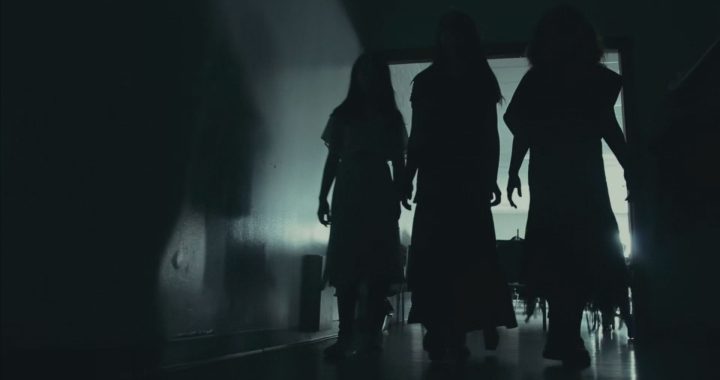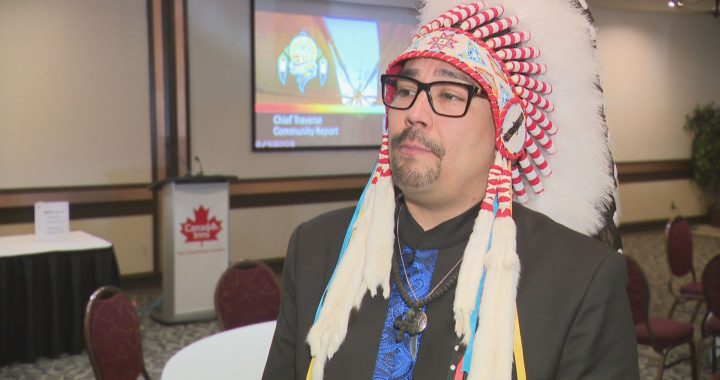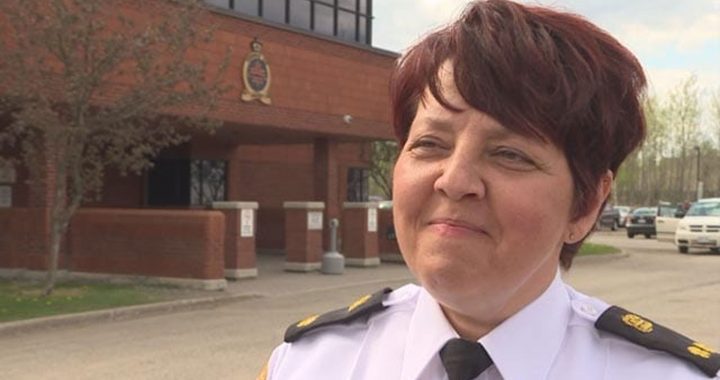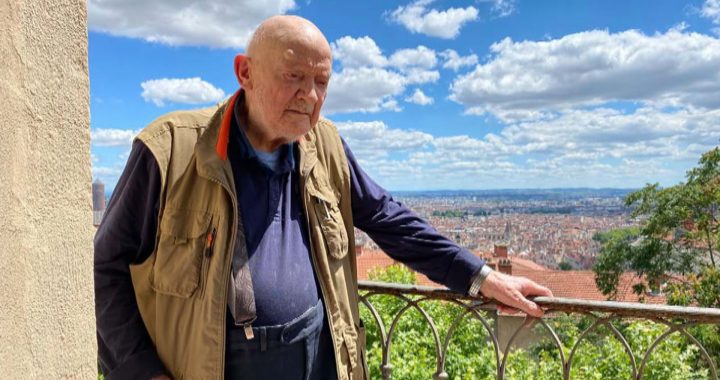Flanked by a guard on each side, a man in his mid-20s fidgets in the prisoner’s box when a witness begins to testify against him.
This is not his first time in court. Judging from the cringe on his face, it’s not getting any easier for him.
Despite the fact he’s just been sentenced to 11-months for assault with a weapon, he seems relieved when it’s over and the bailiffs take him away.
Over the course of the day, a parade of defendants cycle through.
Their faces an assortment of thousand-yard stares, clenched jaws and nervous expressions. Some narrow their eyes and stare straight at the judge for sentencing while others look defeated, hiding their faces in their handcuffed hands.
Puvirnituq is an Inuit community that sits on the shores of Hudson’s Bay, just north of the 60th parallel.
A year ago, Leah Unaluk was one of those faces in the prisoner’s box. Today, she’s free.
“Being in jail was so hard. I had to leave my community and go to a very different place,” says Unaluk.
“I couldn’t see my kids and they couldn’t visit me there.” Leah Unaluk
She has a strong gaze, the sort one would attribute to an analytical mind. It’s hard to picture the soft-spoken 31-year-old mother of four in jail. But that’s where she spent 70 days last year after severely injuring a person while driving her snowmobile drunk. Like all Inuit offenders, she was sent to jail more than a 1,000 km to the south.
“I couldn’t see my kids, and they couldn’t just visit me there, it was hard for me to just talk to them through the phone,” she says.
When pressed about the circumstances of her case, her stoic front is momentarily compromised by a flash of guilt. “I had a drinking problem in the past,” she admits.

“Here we’re just extinguishing fires, that’s what we do.” Sarah Plamondon, defence lawyer
Alcoholism is a plague in this community of about 1,400. When asked to give a rough percentage of criminal cases that involve alcohol or drugs, defence lawyer Michel Solomon says without hesitation “about 99 per cent”.
After watching four days of cases, Solomon’s estimate seems about right. Listening to the prosecution recite the facts behind a case, “the defendant was intoxicated” is among the first sentences spoken in nearly every instance.
And the cases just keep coming.
One accused stands for his sentence. The judge gives him 11 months, minus time served, for heating a butter knife on the stove and burning his partner with it multiple times. A repeat offender, he shouts something in Inuktitut to family and friends in the precious few moments before guards haul him back to detention. Another case is cut short when a woman declines to testify against her partner for assaulting her, stating simply “I don’t want to talk about it.” Another man on trial for assault is described by a witness as looking at his blood covered hands and asking himself “what have I done?” after beating another man senseless.
Criminal court is dramatic by its very nature. Spend enough time in one and you’ll likely hear similar tales of violence and despair. But what’s shocking here is the frequency with which Quebec’s circuit court hears these cases in Nunavik. As an Inuktitut translator who has worked for the court for the last 14 years, Aipili Qumaaleuk has a unique perspective as both an Inuk man and a court worker.

“I could’ve met someone last month as a victim, and this week he can be an accused.” Jonathan Carignan, Crown prosecutor
“Many people are coming back all the time. There’s very few who don’t come back, most people who we see in court are people who tend to get in trouble often”, says Qumaaleuk.
Crown prosecutor Jonathan Carignan adds, “I could’ve met someone last month as a victim, and this week he can be an accused.”
Some of the highest rates of sexual and domestic assault in Quebec are in this region. The courthouse in Puvirnituq serves four Inuit communities on the Hudson Bay coast in northern Quebec. Together, the population totals only about 4,000.
The 181 charges on the docket are described as a quiet week.
This isn’t just a problem endemic to the northern Hudson Bay coast, but in all of Quebec’s “Grand Nord”, or as the 12,000 Inuit call their California sized Arctic homeland, Nunavik.
Like their cousins in Nunavut, Northwest Territories and Labrador, the Inuit in Quebec are best known for soapstone carving and throat singing.
Many of them still hunt and Inuktitut is the mother tongue for most. Their culture is strong, but so is the spectre of post-colonial trauma.
Forced displacement, residential schools and devastating imported illnesses are just some of the all too familiar legacies which have led many Inuit to self-medicate with drugs and alcohol.
Couple the high crime rate in Nunavik with the crawling pace of justice here and cracks in the legal system begin to show.
“Here we’re just extinguishing fires, that’s what we do,” says Sarah Plamondon, who’s been a circuit court defence lawyer for 12 years.
In order to service the 14 fly-in Nunavik communities, an entire functioning court from the south criss-crosses the region by plane dispensing justice, or at least, it tries to.
“We must find a way to overcome the slowness of justice which undermines the confidence of Inuit in the system we have imposed.” Nicolas Plourde, former president Quebec Bar Association
After landing in a community, the Crown prosecutors, defence lawyers and court workers, including the judge, help unload the plane before heading to the courthouse in the afternoon.
The cases range from routine, probation violations, threats, simple assault, to serious, sexual assault, assault with a weapon and one murder.
A typical trip goes like this; on a Monday morning, the travelling court pile onto a charter plane with up to 12 handcuffed and shackled Inuit prisoners accompanied by guards at the Val d’Or airport. Because there’s no detention centre in Nunavik, people accused of serious crimes who are awaiting trial must be held in the south.
Men have to be bussed one hour away from jail in Amos to Val D’or then take the 1,300 km flight to a community such as Puvirnituq. If a case goes all the way to trial, some of them will make this trip five, six – even seven times.
Many cases will be postponed. In order to get through the entire docket, the circuit court will spend 10-hours a day from Tuesday to Thursday, leaving Friday as an emergency “clean up” day for left over cases. This doesn’t include the one to two hours a day they spend negotiating plea bargains, something they’ll do at night back at the hotel if they have to.
Lyne St-Louis is the Nunavik justice officer for Makivik Corporation, the governing body for Quebec’s Inuit. Without blaming the court, she says the amount of cases they pack into five days affects the quality of their work.
“Lawyers, Crown prosecutors and judges are human beings, they have also that need to concentrate on what they’re doing,” she says. “How it’s run at this time can increase the possibility of making a mistake, or not paying attention or not seeing a little detail that they would’ve seen maybe if they had the time.”

“There’s quite a bit of postponement, we just don’t have the time to deal with everybody who has to appear in court.” Aipili Qumaaleuk, translator
The hours might be long in Puvirnituq for the circuit court, but at least the conditions are decent. Most in Quebec’s northern communities don’t have a courthouse.
Many make do with makeshift locations such as hockey arenas, high school gyms or church basements. Some of the scenes described to me are hard to imagine. Judges and lawyers decked out in black robes with toques and mittens because the heating is on the fritz or lawyers meeting with clients in the only place where they have privacy, the stall of a bathroom.
“Sometimes I was meeting the clients in the hockey player’s (locker) room,” says Sarah Plamondon. “I put my parka under my robe because it was so cold.”
Speaking in her office during a short lunch break, Plamondon punctuates her comments with dynamic hand movements and often uses papers on her desk as props.
“Some people would say ‘you should not accept those conditions,’ and some people even criticized me that I have accepted that, but I say to myself, when someone is waiting so long to have their case done, at one point, they need to have closure,” she says.
The sheer quantity of the charges, translation needs, travel and even weather conditions all conspire to make the court fall behind. Sometimes cases take years to resolve.
“There’s quite a bit of postponement, we just don’t have the time to deal with everybody who has to appear in court,” says court translator Aipili Qumaaleuk.
For years, stories of infamous northern courtroom conditions have made the rounds in legal circles. It prompted the Quebec bar association to undertake a two-year study. It recently issued a report to the Quebec government decrying the state of the justice system in Nunavik. They found that more than just infrastructure was lacking.
“People do not understand how the court works, who are the representatives of justice and the role of each,” wrote Nicolas Plourde, the former Chair of the Quebec bar association, said in the bar’s June 2013 newsletter.
Plamondon’s experience backs up Plourde’s observations.
“For a newcomer (Inuk defendant), something as simple as “do you plead guilty, do you plead not guilty” you have to explain what it means,” she says, adding she chalks part of it up to cultural differences.
“Some of my colleagues do not agree with me, but I still believe that Inuit, if something happened, they will say it happened. That’s it. They will not contest just to contest,” says Plamondon, who then pauses to shake her head, a smile at the corner of her mouth. “I even learned the word in Inuktitut to say ‘don’t talk’!”
The Quebec bar report emphasizes that more measures needs to be taken to better explain the criminal justice system to the Inuit, and that justice in Nunavik as a whole needs to be rendered faster.
“We must find a way to overcome the slowness of justice which undermines the confidence of Inuit in the system we have imposed. And because we have imposed it on them, we have an obligation to ensure that it adequately addresses their needs,” said Plourde.
Plourde says the most upsetting thing he saw in Puvirnituq were the four holding cells at the police station. Designed to detain no more than 12 people, they were overflowing with 22 detainees.
Some had been there for four days, when the maximum is supposed to be two. Plourde has described the unsanitary conditions in the cells as “disgusting and third world” because the 22 men were sharing two toilets with little to no access to showers.
Wanting to see if there were still overcrowding issues, I asked for a tour of the Puvirnituq police station and was refused because it was “court week”.
“The way that detainees are kept when they are here (Puvirnituq), this has to be changed.” Angèle Tommasel, defence lawyer
“The way that detainees are kept when they are here (Puvirnituq), this has to be changed, that’s for sure,” says defence attorney Angèle Tommasel, a 22-year veteran of the circuit court who corroborates Plourde’s description of the conditions.
Back at the courthouse, I strike up a conversation with an amiable Inuk man at the coffee machine during a recess. We made small talk about local soap stone deposits and the tribulations of being a black Arctic fox in the Arctic during winter hunting season.
“There’s not much to eat, but they’re easy to spot in the snow,” he says with a wicked smile. He has a good job in the community which helps him support his large family. Assuming he was at court to see a family member, I asked him why he was here.
“Well,” he says, his eyes dropping to the floor “I assaulted a police officer.”
A lot of the defendants come across as sheepish. Many say they don’t remember what happened because they drank to the point of blacking out. One corrections officer told me in confidence “So many of them (detained Inuit) are nice, polite people when they’re sober. But when they drink…”
While Puvirnituq has more than its fair share of impaired driving and assault charges, a lot of cases clogging up the court can be seen as self-inflicted. These cases are called “breaches”, court shorthand for “failure to comply with conditions” and “probation violations.”
The week that I’m there in February they make up about 31 per cent of the charges on the docket.
“The number of files have greatly increased, dramatically increased,” says Plamondon when asked what’s changed since she started in the early 2000s. “For sure, there’s a lot of breaches.”
One condition that is often on the list is not to drink says St-Louis.
“We know that a lot of people have drinking issues, so to me, it’s almost setting them up for failure,” said says St-Louis.
Instead, St-Louis would rather have what she sees as more attainable conditions.
“We know that a lot of people have drinking issues, so to me, it’s almost setting them up for failure. ” Lyne St-Louis, Makivik Corporation
The Inuit name for the justice committee is Sungirtuijuit, and Anna Alasuak is its coordinator in Puvirnituq. Puvirnituq’s justice committee is a loose group of up to eight Inuit who are tasked with serving as a liaison between the community and the imported Quebec legal system.
The justice committee’s undertakings are varied and many, but their goals are straightforward: improve the efficacy of how justice is dispensed in Puvirnituq and prevent community members from reoffending.
“Sungirtuijuit means you still have hope, you still can do it, you still can stand up,” says Alasuak.
When the court is in town, Alasuak is lucky to have five minutes to herself. Defendants, witnesses, lawyers, victims or just about anyone in the courthouse is pulling her aside to talk. Her seemingly endless supply of patience for everyone and everything, makes it easy to see why she was chosen for the job.
The justice committee will recommend sentences to the court, write Gladue reports and even go pick up a community member running late for a court date. For them, no job is too small if it means making the system work better, even if just for a little while. For their part, the court workers are grateful to have them there.
“With the justice committee, they are so implicated, they are at the court, they’re here and I‘m using them as much as I can, every time it’s possible, I do it. And I ask even their advice,” says Plamondon.
For the justice committee, the biggest challenge is keeping newly released prisoners from ending up back in jail. According to St-Louis, who oversees the committees all over Nunavik, one major hurdle is that Inuit are not getting the help they need when they are in prison.
“There’s not many services, especially when you’re at that level of preventive custody. To me, (it’s) a waste of time sometimes. Okay, we’re safer, because what the person has done is dangerous, but the person is not getting any help,” says St-Louis.
What services that are available in detention are in French, which most Inuit don’t speak.
“They have a need to see their family, they have a need to continue in their tradition, they have a need to speak their language and that to me is really, really missing,” says St-Louis.
Anna Alasuak thinks that a jail should be built up north to help with rehabilitation and cut down on travel for inmates and relatives who want to visit.

“Sungirtuijuit means you still have hope, you still can do it, you still can stand up.” Anna Alasuak
Ask anyone on the justice committee for one of its success stories, and they’ll point to Leah Unaluk.
Despite the serious nature of her crime, she was granted parole early under the conditions that she receive treatment for alcoholism and that she participate in the justice committee’s restorative justice program.
Restorative justice can involve apologizing to the victim of the crime via a healing circle, volunteering to help out elders in the community, as well as day trips that focus around traditional Inuit activities such as sewing, hunting and soapstone carving.
“The organizations (social services) would be more available for the prisoners if there was a prison here up north. It’s difficult for them being in the south, it would be a lot easier for them, they would have a lot more help,” says Alasuak.
”When I went to see the justice committee I felt comfortable to talk to them about my problems and my short comings and they help me and they listen to me,” says Unaluk.
Unaluk speaks purposefully, weighing her words. English is her second language and she’s adamant about expressing exactly how she feels.
“I enjoyed being out to the land, it helped me a lot to soothe my feelings,” she explains. “We can have a better life – go hunting, fishing sewing, do the activities and be a good role model to the children, because it’s our future.”
Unaluk was identified by both the Quebec court and the justice committee almost immediately as someone who would benefit from the limited programs being offered. Not only is she doing well, she’s working to make amends in Puvirnituq by speaking with high school students about impaired driving as well as counselling for an Inuit version of an alcohol addiction program.
But so far her story is the exception to the rule.
During my week in the community, Puvirnituq’s young demographics were brought up ominously by both court workers and members of the justice committee. According to the 2011 Canadian census, 79 per cent of Puvirnituq is under the age of 30 and 60 per cent are 28 or younger.
This makes for a sense of urgency, because if social services and the justice system continue to tread water battling crime and social issues, an ever increasing rate of incarceration looms large.
Court and social workers are already alarmed by the rate of released Inuit who end up reoffending, and for those who do want help, there’s only one addiction treatment centre for all of Nunavik. It can only accommodate nine clients every six-week cycle.
“There’s more people, there’s more crime,” says court translator Aipili Qumaaleuk. “There’s a lot of young people who are in court more than older people are.”
St-Louis says cases like Unaluk’s proves that they can reach some people, but there’s plenty that fall through the cracks. She’s haunted by one case in particular, where a woman’s defence attorney forgot to refer her for treatment that could have led to an early parole.
“It breaks my heart when we could’ve done something to help this woman when she was ready and because of this lack of services, lack of continuity, lack of funding she is now in the penitentiary,” says St-Louis.
Plamondon feels strongly that the court can’t do much more to help and that money conceivably spent on a prison would be better put towards more social services.
“Imagine if we don’t do something right now. We cannot wait, it cannot wait, we need to help them, we don’t need to judge them,” she says.
I put the question to Unaluk: Are things getting better or worse? The inhale she takes before answering is sharp, the hesitation that follows reveals more than her answer.
“It’s hard to tell,” she says finally. “It’s hard to tell.”
The sun begins to sink below the horizon, washing the white Arctic outside the window into a blazing orange. My week at court is nearing its end.
Before I leave I speak with an older Inuk man, the father of the young man who had been sentenced to 11-months of jail time down south. I ask him an obvious question, is it hard knowing he won’t see his son for months?
“Even one day is hard,” he says.










I was involved with the justice committee in Puvirnituq in the 80’s (it was called Sapuulutait at the time) and worked in many communities in Nunavik and the territories (NWT, Nunavut & Yukon) and heard this for over 3 decades but no government or Bar association is willing to let go of the colonial court system. Because this is what it is – I’ve seen numerous victims & offenders go to court and be completely baffled by what was happening in a foreign language and in a way that is culturally inappropriate for Inuit. I’m appalled that we can hear the same old stories that we were hearing 30 years ago and that no real progress has been made. Inuit have their own legal traditions but the mainstream court system will not let go, other than “divert” some cases to the justice committees – this is a plaster on a gaping wound. Inuit can govern themselves and apply their own conflict resolution processes but for that, we need to work together as partners to achieve that goal. Finally, jail is a type of punishment that is often meaningless to Inuit and other than keeping someone ‘away’ from the community, it cannot achieve rehabilitation as it is completely foreign to inuit culture – that’s why building a jail in Nunavik would not make any sense and be counterproductive. Look at Greenland, where they have a different way of dealing with ‘offenders’ and be inspired to change things that may work and not perpetuate things that we know don’t work – proof of that is the increasing crime rates in the Arctic… the colonial (circuit) courts haven’t been able to make a dent in that growing trend.